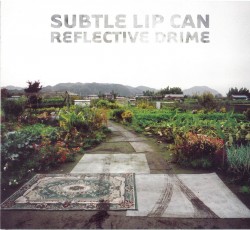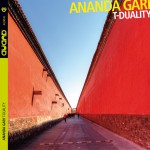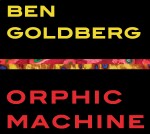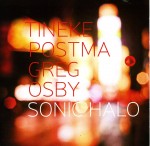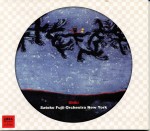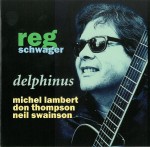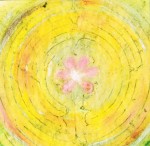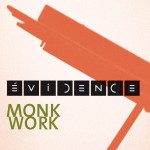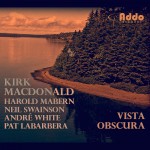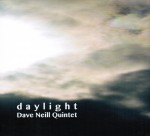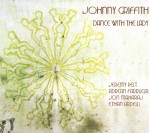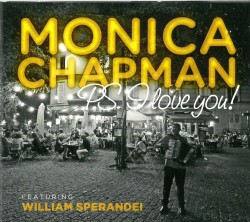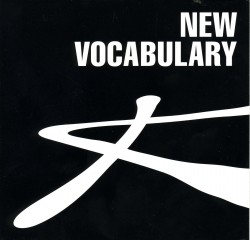Something In The Air | Unusual Formats for New Music - March 2015
“Everything old is new again” doesn’t go quite far enough in describing formats now available for disseminating music. Not only are downloads and streaming becoming preferred options, but CDs are still being pressed at the same time as musicians experiment with DVDs, vinyl variants and even tape cassettes. Happily the significance of the musical messages outweighs the media multiplicity.
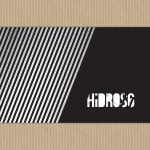 If there’s one instance of a musician having it all, then consider Swedish saxophonist Mats Gustafsson’s boxed set Hidros 6 – Knockin’ (Not Two MW 915 nottwo.com). Recorded during a five-day gig in Krakow, by a specially constituted 12-member NU Ensemble,it highlights the group’s performance of the title track plus different musicians’ solo work. In total the Hidros box contains five CDs, two LPs, one DVD plus a 22-page LP-sized booklet. An addendum, the hour-plus DVD, includes a filmic record of different-sized ensembles improvising, rehearsing or performing the Knockin’ score plus interviews with many of the principals. All four sides of the LPs are given over to the large ensemble performance, which celebrates the transgressive sounds which Little Richard Penniman brought to pop music in the 1950s. Not rock ’n’ roll by any stretch of the imagination, Gustafsson’s graphic score combines the free jazz methodology of the players with samples of Little Richard’s works propelled by turntablist Dieb13, plus high-pitched repetition of certain phrases from his hits by vocalist Stine Janvind Motland. Climaxing with a call-and-response manifest the four sides of Knockin’ shove the vocal freedom engendered by Penniman into the instrumental realm. Solo and in sections, the players use extended instrumental procedures to fragment themes into in-your-face abstractions. Lyric soprano Motland has the hardest task since repeatedly vocalizing Little Richard lyrics such as “Hmm, I don’t need a show/Gimmie gimmie gimmie gimmie gimmie” or “Bama lama bama loo/Go, go, have a time” calls for intense concentration plus a sense of humour. She and the other players are better showcased on the three group CDs. Accompanied by only Dieb13 and drummer Paal Nilssen-Love, Motland eschews words for bird-like falsetto titters and warbles which elongate enough to make common cause with the slashes of sound and LP tracking rumbles sourced by Dieb13. At the same time her staccato pacing and wails connect on a visceral level with Nilssen-Love’s undulating and unvarying patterning. Elsewhere, the drummer demonstrates his malleability laying down an unobtrusive beat for Nybyggarland one of the vintage Scandinavian bop classics the band Swedish Azz plays. That quintet, filled out by Per Åke Holmlander’s tuba, Gustafsson on baritone sax, Dieb13 and Kjell Nordeson on vibes and drums creates a tune that’s engaging and swinging at the same time, with Nordeson’s vibes providing the sparkling melody as the low-pitched horns push out balanced blasts. Nordeson is also an exceptional drummer, with the evidence on the more-than 29-minute duet with pianist Agustí Fernández. Aggressively acoustic, the two produce a memorable savage, free-form intensity, as does a medley of New Thing classics performed on a later disc at warp-speed velocity by The Thing – Gustafsson, Nilssen-Love, bassist Ingebrigt Håker Flaten – plus additional tenor saxophonist Joe McPhee. With Fernández smacking the side of his instrument and forcefully plucking piano strings with fish-hook sharpness, it’s sometimes hard to determine where the drummer’s dynamic clunks and metal rustles end and his begin. Crucially this blunt-beat colouration reaches an exultant climax following the pianist’s highly volatile keyboard cascades and the percussionist’s introduction of clacking metal bar abrasions from his vibes. More memorable matchups include Fernández and Gustafsson joining trumpeter Peter Evans or McPhee with bass clarinetist Christer Bothén. On the first, the pianist’s rappelling forward at player-piano velocity challenges as well as accompanies the horn men. The result is staccato and dyspeptic timbres from both: in Evans’ case moving beyond the limits of his horn to elevate notes past triplets; and in Gustafsson’s blasting honks and slurs upwards. McPhee and Bothén create a gentler duet, each man defining the American or Swedish abstractions’ elaboration, with McPhee supplying human-like cries from his horn as Bothén appears to be digging into his own stomach lining for raw expression. With so much music to choose from however, it’s likely the listener will find much to enjoy in this box of wonders.
If there’s one instance of a musician having it all, then consider Swedish saxophonist Mats Gustafsson’s boxed set Hidros 6 – Knockin’ (Not Two MW 915 nottwo.com). Recorded during a five-day gig in Krakow, by a specially constituted 12-member NU Ensemble,it highlights the group’s performance of the title track plus different musicians’ solo work. In total the Hidros box contains five CDs, two LPs, one DVD plus a 22-page LP-sized booklet. An addendum, the hour-plus DVD, includes a filmic record of different-sized ensembles improvising, rehearsing or performing the Knockin’ score plus interviews with many of the principals. All four sides of the LPs are given over to the large ensemble performance, which celebrates the transgressive sounds which Little Richard Penniman brought to pop music in the 1950s. Not rock ’n’ roll by any stretch of the imagination, Gustafsson’s graphic score combines the free jazz methodology of the players with samples of Little Richard’s works propelled by turntablist Dieb13, plus high-pitched repetition of certain phrases from his hits by vocalist Stine Janvind Motland. Climaxing with a call-and-response manifest the four sides of Knockin’ shove the vocal freedom engendered by Penniman into the instrumental realm. Solo and in sections, the players use extended instrumental procedures to fragment themes into in-your-face abstractions. Lyric soprano Motland has the hardest task since repeatedly vocalizing Little Richard lyrics such as “Hmm, I don’t need a show/Gimmie gimmie gimmie gimmie gimmie” or “Bama lama bama loo/Go, go, have a time” calls for intense concentration plus a sense of humour. She and the other players are better showcased on the three group CDs. Accompanied by only Dieb13 and drummer Paal Nilssen-Love, Motland eschews words for bird-like falsetto titters and warbles which elongate enough to make common cause with the slashes of sound and LP tracking rumbles sourced by Dieb13. At the same time her staccato pacing and wails connect on a visceral level with Nilssen-Love’s undulating and unvarying patterning. Elsewhere, the drummer demonstrates his malleability laying down an unobtrusive beat for Nybyggarland one of the vintage Scandinavian bop classics the band Swedish Azz plays. That quintet, filled out by Per Åke Holmlander’s tuba, Gustafsson on baritone sax, Dieb13 and Kjell Nordeson on vibes and drums creates a tune that’s engaging and swinging at the same time, with Nordeson’s vibes providing the sparkling melody as the low-pitched horns push out balanced blasts. Nordeson is also an exceptional drummer, with the evidence on the more-than 29-minute duet with pianist Agustí Fernández. Aggressively acoustic, the two produce a memorable savage, free-form intensity, as does a medley of New Thing classics performed on a later disc at warp-speed velocity by The Thing – Gustafsson, Nilssen-Love, bassist Ingebrigt Håker Flaten – plus additional tenor saxophonist Joe McPhee. With Fernández smacking the side of his instrument and forcefully plucking piano strings with fish-hook sharpness, it’s sometimes hard to determine where the drummer’s dynamic clunks and metal rustles end and his begin. Crucially this blunt-beat colouration reaches an exultant climax following the pianist’s highly volatile keyboard cascades and the percussionist’s introduction of clacking metal bar abrasions from his vibes. More memorable matchups include Fernández and Gustafsson joining trumpeter Peter Evans or McPhee with bass clarinetist Christer Bothén. On the first, the pianist’s rappelling forward at player-piano velocity challenges as well as accompanies the horn men. The result is staccato and dyspeptic timbres from both: in Evans’ case moving beyond the limits of his horn to elevate notes past triplets; and in Gustafsson’s blasting honks and slurs upwards. McPhee and Bothén create a gentler duet, each man defining the American or Swedish abstractions’ elaboration, with McPhee supplying human-like cries from his horn as Bothén appears to be digging into his own stomach lining for raw expression. With so much music to choose from however, it’s likely the listener will find much to enjoy in this box of wonders.
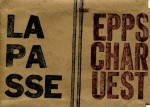 If Gustafsson’s package is the apex of modern sound dissemination then a couple of Montreal free improvisers go in the opposite direction with their release La Passe (Small Scale Music smallscalemusic.wordpress.com) is available only on cassette tape – though it does include a download code – which is how alto saxophonist Yves Charuest and trumpeter Ellwood Epps document their near telepathic interaction. With startlingly clear sound the five tracks capture relaxed improvisations that are often melodic and linear without ever losing a spiky edge. Merely brushing against one another as they follow parallel courses, one creates the defining narrative(s) which the other garnishes with deconstructed vamps. On Deuxième Passe for instance, tongue slaps plus bagpipe-like strains from the saxophonist foreshadow a plunger response from Epps, ensuring that the climax is polyphonic and pleasant. Similarly intersecting strategies on Quartième Passe reveal lip bubbling plus percussive bumps until separating into harsh buzzes (Charuest) and bird-like peeps (Epps). Finally as the trumpet’s airy loops bring out complementary reed timbres, the finale suggest waves lapping against a tranquil shore. A session where the message is more important than the medium, the accomplished duo deserves wider exposure in many formats.
If Gustafsson’s package is the apex of modern sound dissemination then a couple of Montreal free improvisers go in the opposite direction with their release La Passe (Small Scale Music smallscalemusic.wordpress.com) is available only on cassette tape – though it does include a download code – which is how alto saxophonist Yves Charuest and trumpeter Ellwood Epps document their near telepathic interaction. With startlingly clear sound the five tracks capture relaxed improvisations that are often melodic and linear without ever losing a spiky edge. Merely brushing against one another as they follow parallel courses, one creates the defining narrative(s) which the other garnishes with deconstructed vamps. On Deuxième Passe for instance, tongue slaps plus bagpipe-like strains from the saxophonist foreshadow a plunger response from Epps, ensuring that the climax is polyphonic and pleasant. Similarly intersecting strategies on Quartième Passe reveal lip bubbling plus percussive bumps until separating into harsh buzzes (Charuest) and bird-like peeps (Epps). Finally as the trumpet’s airy loops bring out complementary reed timbres, the finale suggest waves lapping against a tranquil shore. A session where the message is more important than the medium, the accomplished duo deserves wider exposure in many formats.
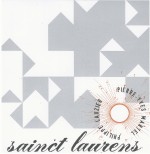 Following up on the new vinyl emphasis, another Montreal-based duo, Pierre-Yves Martel, who plays viola da gamba, objects and feedback, and soprano saxophonist/bass clarinetist Philippe Lauzier, have released an LP of Sainct Laurens Volume 2 (E-tron Records ETRC 019 e-tron.bandcamp.com), even though Volume 1 was on CD. The choice is somewhat ironic since the textures the duo creates on these eight tracks relates more closely to computerized miniaturization than direct-to-disc mechanism. For a start, Martel’s treatment of the viola da gamba is that of a hammered dulcimer, using percussive resonation to clip and clank discursive blows even as they define the themes. Lauzier’s common strategy is to pull strident, almost vibrato-less horizontal tones from his horns, creating parallel responses to Martel’s expositions. Emphasizing his instruments’ wood, metal and reed properties, Lauzier’s tone ranges from pan flute-like airiness to violent glissandi. Additionally, triggered wave forms comment below the surface, creating more sonic surfaces to explore. Volga is one instance where Martel’s steel pan-like echoes meet equally bellicose bell-like gongs that are revealed as tongue slaps. As the buzzing timbres separate into reed blowing and sul ponticello string extensions, exhilarating timbres reach a crescendo, yet are craftily and abruptly cut off. This split-second timing plus startling tone integration and partition continues throughout the disc, making the pause between LP sides off-putting, but not insurmountable.
Following up on the new vinyl emphasis, another Montreal-based duo, Pierre-Yves Martel, who plays viola da gamba, objects and feedback, and soprano saxophonist/bass clarinetist Philippe Lauzier, have released an LP of Sainct Laurens Volume 2 (E-tron Records ETRC 019 e-tron.bandcamp.com), even though Volume 1 was on CD. The choice is somewhat ironic since the textures the duo creates on these eight tracks relates more closely to computerized miniaturization than direct-to-disc mechanism. For a start, Martel’s treatment of the viola da gamba is that of a hammered dulcimer, using percussive resonation to clip and clank discursive blows even as they define the themes. Lauzier’s common strategy is to pull strident, almost vibrato-less horizontal tones from his horns, creating parallel responses to Martel’s expositions. Emphasizing his instruments’ wood, metal and reed properties, Lauzier’s tone ranges from pan flute-like airiness to violent glissandi. Additionally, triggered wave forms comment below the surface, creating more sonic surfaces to explore. Volga is one instance where Martel’s steel pan-like echoes meet equally bellicose bell-like gongs that are revealed as tongue slaps. As the buzzing timbres separate into reed blowing and sul ponticello string extensions, exhilarating timbres reach a crescendo, yet are craftily and abruptly cut off. This split-second timing plus startling tone integration and partition continues throughout the disc, making the pause between LP sides off-putting, but not insurmountable.
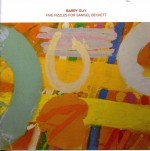 Another profoundly in-the-moment musician who has chosen an old-school format is British bassist Barry Guy. Referring by inference to experimental as well as advanced instant compositions, Five Fizzles for Samuel Beckett (NoBusiness Records NBEP 2 nobusinessrecords.com) is available as a 10-inch vinyl EP. Solo and only 14-minutes long, the program is as spacious and brutal as any of the Irish writer’s creations. Double stopping while pumping and pummeling his string set, Guy has created an autonomous salute where his single double bass creates more emotional resonance than exists in the author’s laconic works. Rappelling up and down his four strings at supersonic speeds, the bassist uses rasgueado and spiccato intensification in his playing, creating more resonance by vibrating a stick placed horizontally behind his strings. Besides attractive cross tones, belfry-like bell echoes and what sounds like wood rendered splinter by splinter, are heard. Finally on Fizzle V the concluding strategies reflect back on earlier tactics. Scrubbing every part of the bass, the climax combines pressure, pain and pleasure, with the coda a series of col legno whacks. Guy honors Beckett by expressing his own (musical) language.
Another profoundly in-the-moment musician who has chosen an old-school format is British bassist Barry Guy. Referring by inference to experimental as well as advanced instant compositions, Five Fizzles for Samuel Beckett (NoBusiness Records NBEP 2 nobusinessrecords.com) is available as a 10-inch vinyl EP. Solo and only 14-minutes long, the program is as spacious and brutal as any of the Irish writer’s creations. Double stopping while pumping and pummeling his string set, Guy has created an autonomous salute where his single double bass creates more emotional resonance than exists in the author’s laconic works. Rappelling up and down his four strings at supersonic speeds, the bassist uses rasgueado and spiccato intensification in his playing, creating more resonance by vibrating a stick placed horizontally behind his strings. Besides attractive cross tones, belfry-like bell echoes and what sounds like wood rendered splinter by splinter, are heard. Finally on Fizzle V the concluding strategies reflect back on earlier tactics. Scrubbing every part of the bass, the climax combines pressure, pain and pleasure, with the coda a series of col legno whacks. Guy honors Beckett by expressing his own (musical) language.
This is also a variant on what each of the musicians here has done: producing memorable sounds preserved on individually chosen formats.
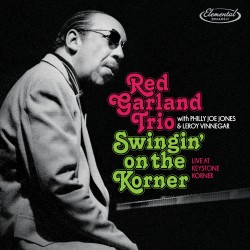 Swingin’ on the Korner
Swingin’ on the Korner

